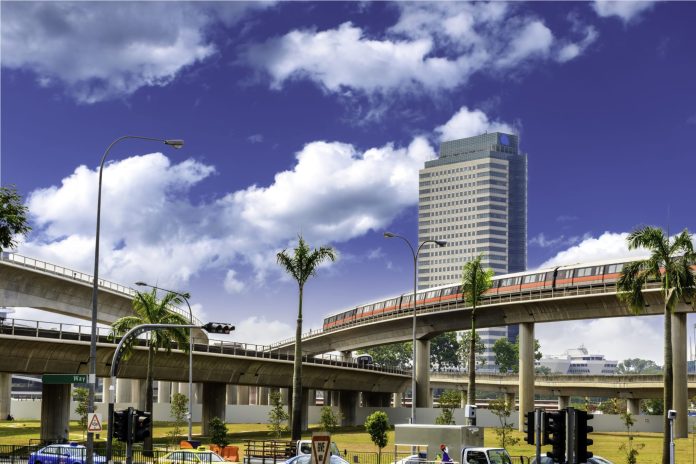Intelligent Transportation Systems (ITS), or smart transportation, refers to the integrated application of modern technologies and management strategies in transportation systems. These intelligent systems are being implemented by automobiles, public transport systems, train operators, airports and airlines, among others, in order to make transportation more efficient.
Singapore has implemented a sophisticated Intelligent Transport System (ITS), which uses data collection and ITS solutions to organize road traffic.
Singapore’s smart transportation system acts in concert with a number of other transport initiatives including free public transportation in pre-morning peak hours, a vehicle quota system, a congestion charge, and an extensive public transport system. As part of ITS, Singapore has deployed an electronic road pricing system (ERP), which acts as a de facto congestion charge. The ERP uses a short-range radio communication system to deduct charges from smart cards inserted in all vehicles, and charges varies according to traffic flows and the time of day.
Other ITS elements include an expressway monitoring and advisory system, alerting motorists to traffic accidents on major roads; a GPS system installed on city taxis, which monitors and reports on traffic conditions around the city; and a parking policy in which the government determines the minimum parking provision and empowers car park operators to determine charges based on demand. Information from the systems feeds into the ITS Operations Control Centre, which consolidates the data and provides real-time traffic information to the public.
A few years ago, Taiwan High Speed Rail (THSR) needed a reliable and proactive means of addressing the demanding maintenance requirements of high-speed rail transport. In order to achieve this, THSRC used IBM Maximo to build an advanced equipment maintenance system capable of automatically triggering maintenance activities by detecting potential problems in the network and—through automated alarms—addressing the problem before it becomes a risk to passenger safety.
THSRC designed the solution, known as the maintenance management information system (MMIS), to gather data from existing monitoring and telemetry systems and integrate it into a simplified planning and maintenance workflow.
The system gathers over 320,000 data elements, from the rotation and temperature of wheels to the thickness of the overhead wire from which the train draws its power. In the case of the train wheel, for example, condition-based data is sent wirelessly, in real time to a central repository, for comparison to normal specifications.
In the event of a deviation on a particular parameter, such as excessive brake wear, an onboard monitoring system automatically sends an alarm to the MMIS system, which automatically generates the appropriate work order request.
Smart4Aviation is a Dutch company which focuses on the provision of web based and mobile products and services to optimize, simplify and improve airline operations.
The company’s Smart LOAD is a fully weight and balance solution which fully automates the entire load planning, monitoring and execution process. Through the union of the Smart LOAD and Smart COMM applications, loading restrictions, irregularity handling, and direct communication are no longer challenges for airlines, the company said.
As the system receives real-time information from the flight planning, passenger reservation, check-in baggage, cargo, as well as other systems, Smart LOAD automatically performs weight & Balance calculations which are continually recalculating throughout the loading process. Once achieved certain pre-defined milestones or thresholds the system will re-issue new fuel, loading instructions and final load number to the crew.
Alaska Airlines and its sister airline, Horizon, achieved a major step toward automating much of the load planning process when, with the help of the SmartLOAD system, the airlines were able to standardize processes, reduce rework, and increase communication among workgroups. While there were some process changes, the flexibility of SmartLOAD allowed for highly configurable business rules to support existing processes. Alaska Airlines said that prior to this project, the company was using a legacy weight and balance system that had been built in-house. While it had served the airline well, it was an aging system that was difficult to maintain and couldn’t be easily changed to support evolving business demands. The system was heavily reliant on manual data entry from other systems, and lacked functionality to support standardization of processes.

